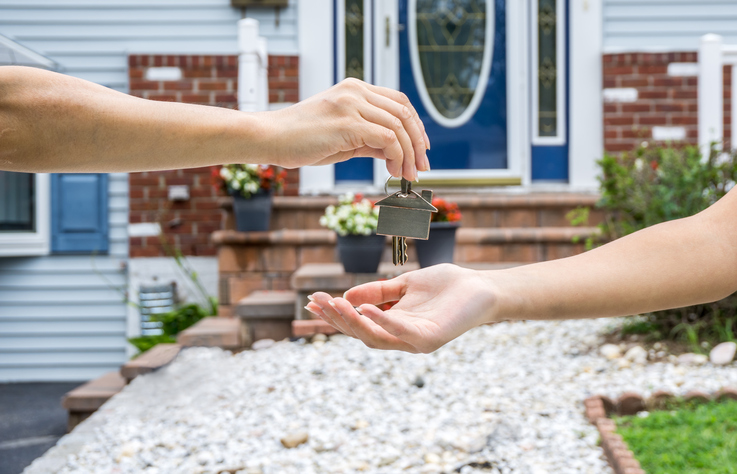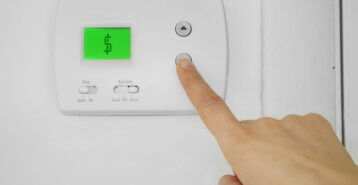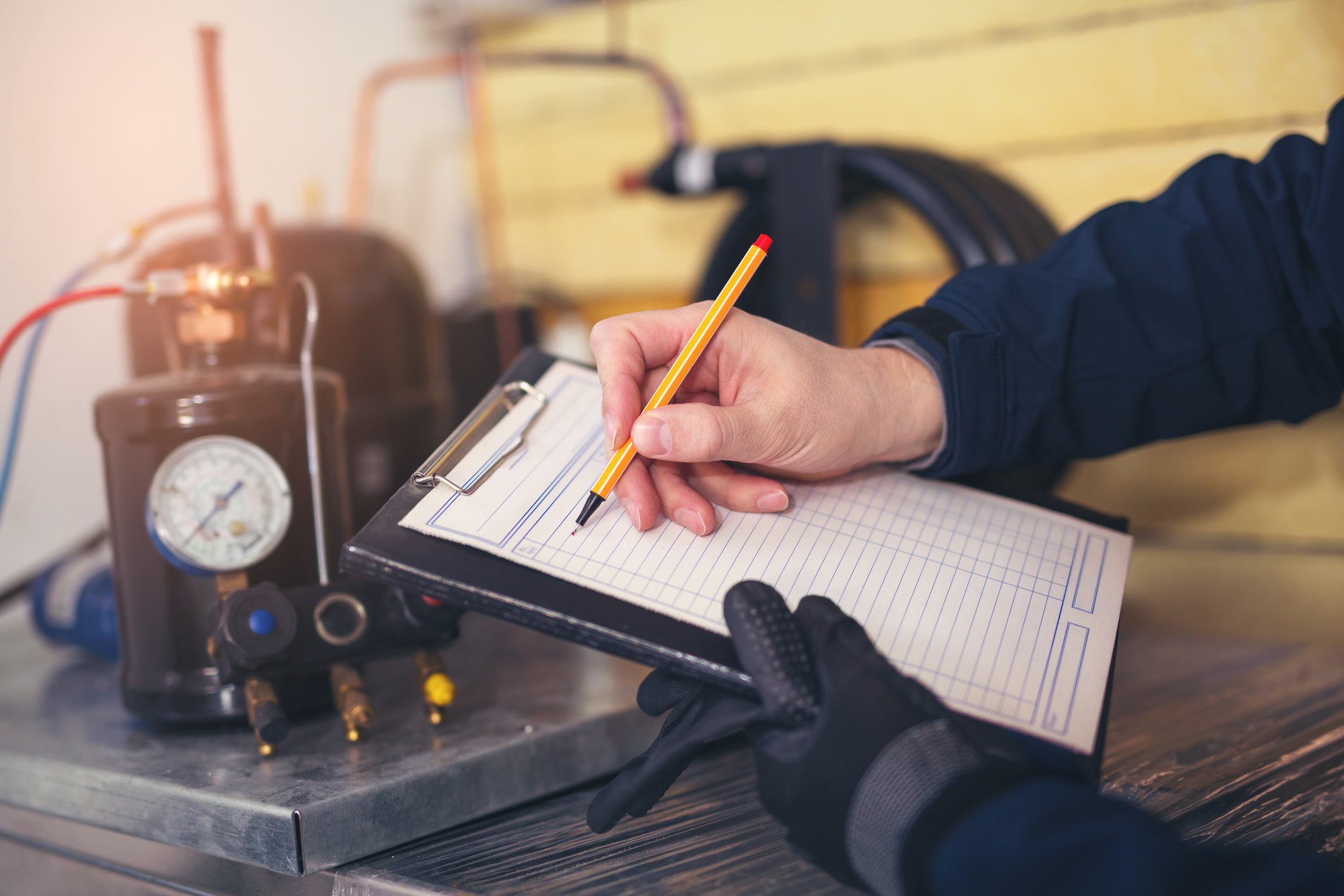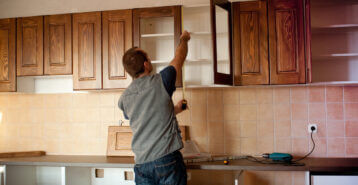First-Time Homeowner 101: Your Essential Guide
Becoming a first-time homeowner is one of life’s biggest and most exciting milestones. It represents stability, independence, and a new level of responsibility. But it can also feel overwhelming. After the thrill of closing day fades and the moving truck pulls away, you’re suddenly faced with questions like: What now? What do I need to do first? How do I take care of this place?
This guide is here to walk you through that journey — from before you move in, to those critical first weeks, to maintaining and upgrading your home for the years ahead. Your Modernize team has had lots of experience with first-time and new-home ownership; we’ve created something for you that we all wish we’d had!
Before You Move In: Set the Stage for Success
It’s almost time! The move-in date is circled on your calendar, the boxes are packed, and you’re eager to unlock the front door to your new life. But before you dive headfirst into arranging furniture or picking paint swatches, there are a few essential steps to take that will make your transition smoother and your home safer from day one. These initial tasks may not be glamorous, but they’re critical to ensuring you start your journey as a first-time homeowner on solid ground.
1. Schedule a Final Walkthrough
Before you ever unload a box, schedule a final walkthrough of the home. This is your last chance to ensure that any negotiated repairs have been completed, that appliances and systems are in working order, and that no damage occurred during the seller’s move-out. Don’t rush this — take your time and make notes or take pictures if needed.

2. Change the Locks
Even if the seller seems trustworthy, you don’t know who else has copies of the keys. Changing the locks (or rekeying them) is a quick, inexpensive way to ensure that you’re the only one with access to your new home. While you’re at it, consider upgrading to smart locks for added convenience.
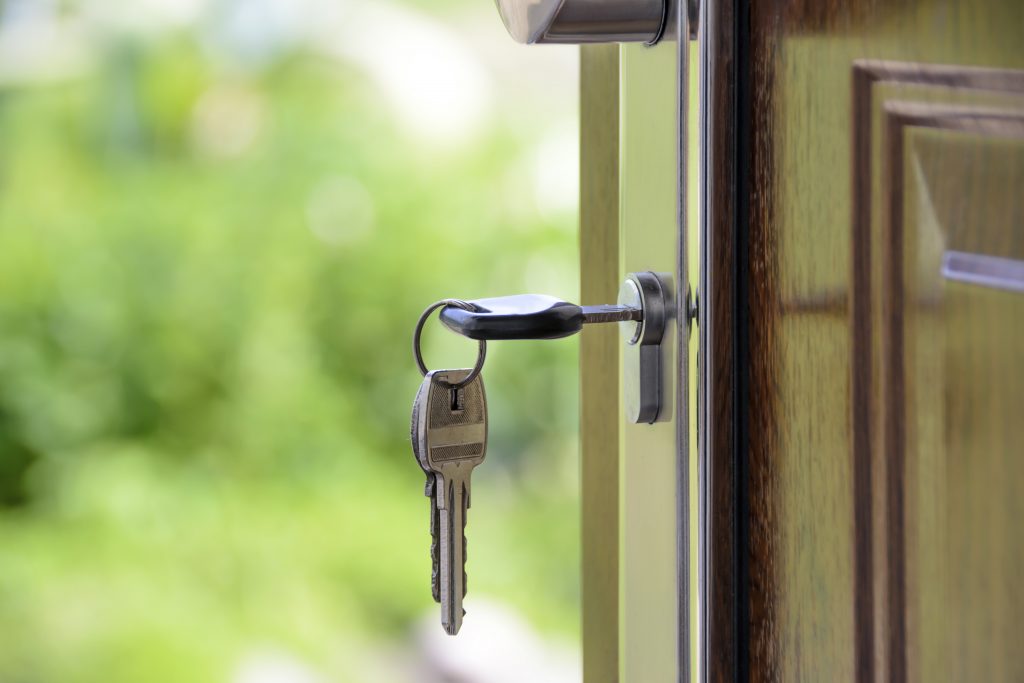
3. Transfer Utilities
It’s easy to overlook in the chaos of moving, but make sure your utilities are up and running in your name. This includes electricity, gas, water, trash, internet, and any HOA dues. Aim to do this at least a week before moving in to avoid service interruptions.

4. Check Safety Devices
Safety first: ensure smoke detectors and carbon monoxide alarms are present and functional. Check their manufacture dates (they should be replaced every 7 to 10 years), and install fresh batteries. Also, buy and place fire extinguishers in the kitchen and near utility areas.
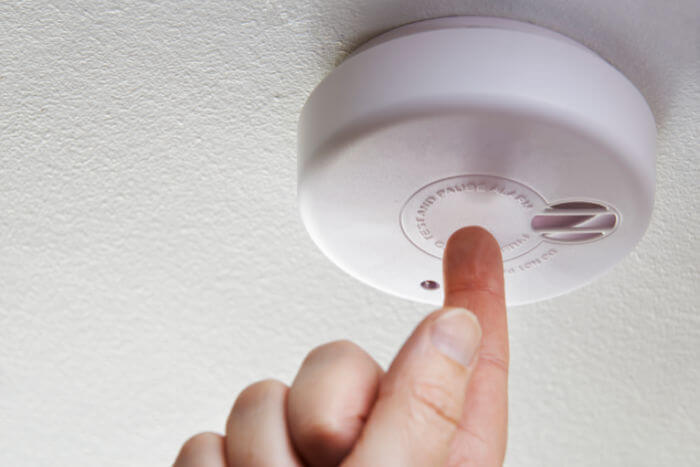
The First Week: Make Your Home Move-In Ready
Once you’re in the door, it can be tempting to start decorating or unpacking right away. But setting a solid foundation early on can save a lot of trouble later.

- Deep Clean Everything: Even if the home looks clean, even if it’s a brand new build, give it a thorough top-to-bottom scrub. Focus on kitchens, bathrooms, floors, and inside cabinets. This is your only chance to clean an empty home!
- Inspect Major Appliances: Check the age and condition of the HVAC system, water heater, dishwasher, oven, and washer/dryer. Look for rust, leaks, or signs of disrepair.
- Locate Shutoffs and Panels: Know where your water main shutoff valve, gas shutoff, and electrical breaker box are. Label the breakers if they aren’t already.
- Start a Home Binder: Gather all appliance manuals, warranties, inspection reports, and receipts. This will be invaluable for future repairs or when selling the home.
- Meet Your Neighbors: Introduce yourself! A good relationship with neighbors can be a source of advice, help, and even security.
First-Time Homeowner Maintenance: Your New Monthly Routine
Owning a home means caring for it regularly. Set up recurring reminders for monthly, quarterly, and annual tasks to keep things running smoothly.
Monthly Tasks
- Change HVAC Filters: Keeps your air clean and your system efficient.
- Clean Garbage Disposal: Use vinegar and ice cubes or disposal cleaning pods.
- Test Smoke/CO Detectors: A quick button press can literally save lives.
Quarterly Tasks
- Inspect Gutters: Check for clogs or detachment, especially after storms.
- Flush Toilets in Unused Bathrooms: Prevents stagnant water and mineral buildup.
- Check Caulking in Wet Areas: Cracks can lead to hidden water damage.
Annual Must-Dos
- Service HVAC Systems: Prevent breakdowns and extend lifespan.
- Drain Water Heater: Flush out sediment that can damage the tank.
- Power Wash Exterior: Keeps siding and walkways looking fresh.
- Clean Chimney (If You Have One): Essential for safety and efficiency.
Understanding the Inner Workings of Your Home
Even if you’re not a DIYer, understanding your home’s major systems helps you prevent issues and talk to professionals knowledgeably.
- HVAC: Know your filter size, where it goes, and whether you have central air, a heat pump, or a mini-split system.
- Plumbing: Learn where your main shutoff valve is and install leak detectors under sinks and near water heaters.
- Electrical: Familiarize yourself with GFCI outlets and how to reset them. Label breakers clearly for quick troubleshooting.
- Roof & Gutters: Inspect at least twice a year for signs of wear, sagging, or missing shingles. Clean gutters to prevent water damage.
Renovations & Upgrades: Plan Smartly
Upgrading your home can be incredibly rewarding and is one of the most tangible ways to add comfort, function, and value to your space. The excitement for first-time homeowners is massive! However, it’s important to approach changes with patience and a well-thought-out plan.
Before making any major modifications, consider living in your home for a few months. This gives you time to observe how natural light moves through rooms, how you actually use the space day-to-day, and which features or layouts truly need improvement. Rushing into renovations too soon can lead to costly decisions that don’t align with how you end up living in the home.
- Prioritize Safety and Efficiency: Start with improvements that impact your safety, health, and utility costs. This includes replacing outdated electrical panels, addressing roof leaks, fixing plumbing issues, and upgrading to energy-efficient windows and insulation. These projects might not be glamorous, but they lay a strong foundation for everything else.
- Budget Wisely: No matter how small the project, always get at least two or three estimates and research your contractors thoroughly. Build in a buffer of 15% over the estimated cost to prepare for the unexpected — because something almost always comes up.
- DIY When Appropriate: While rolling up your sleeves and tackling projects yourself can save money and give you a sense of accomplishment, it’s important to recognize your limits. Tasks like painting, installing shelves, or changing cabinet hardware are great for beginners. But for anything involving plumbing, electrical work, structural changes, or significant tools, hiring licensed professionals is usually safer and more cost-effective in the long run. Pros bring experience, can spot issues you might miss, and help ensure that projects meet code — which is especially important if you plan to sell your home in the future.
Financial Planning for First-Time Homeowners
Owning a home brings recurring and surprise expenses. Staying ahead financially is part of smart ownership.
- Emergency Fund: Save 1% to 3% of your home’s value annually for maintenance.
- Homeowner’s Insurance: Know your coverage and consider add-ons for flooding, earthquakes, or valuables.
- Tax Benefits: Deduct mortgage interest and property taxes (consult a tax pro).
- Home Equity: Track your equity and explore refinancing only if it makes long-term financial sense.
Keeping Your Home Safe and Secure
Home safety involves more than simply locking the front door. It’s about being proactive, prepared, and attentive to the potential risks that come with homeownership. By addressing safety holistically, you not only protect your investment but also ensure peace of mind for everyone under your roof. Here are the top things we recommend for first-time homeowners!
- Install a Security System: Investing in a home security system — even a basic one — is one of the most effective ways to deter crime. This can range from a simple doorbell camera to a comprehensive setup with sensors, cameras, motion detectors, and 24/7 monitoring. Many systems are now wireless and can be monitored from your phone, making it easier than ever to keep an eye on things when you’re away.
- Secure Windows and Doors: Many break-ins occur through unlocked or poorly secured entry points. Reinforce exterior doors with solid-core materials, install deadbolt locks, and consider using door strike plates with longer screws for added strength. On windows, install locking mechanisms and use security film to make glass harder to shatter. Simple tools like window dowels or pins can prevent windows from being opened from the outside.
- Disaster Preparedness: Emergencies such as fires, floods, or natural disasters can strike with little warning. Have an emergency kit ready that includes flashlights, batteries, water, non-perishable food, a first-aid kit, medications, important documents, and cash. Research your region’s most likely disasters and make an evacuation plan. Store key phone numbers and make sure all family members know what to do in an emergency.
- Childproofing and Pet-Proofing: If you have young children or pets, it’s critical to eliminate hazards within the home. Anchor large furniture to the wall to prevent tip-overs, use safety latches on drawers and cabinets, and cover all unused electrical outlets. Store cleaning supplies, sharp tools, and medications in locked or out-of-reach cabinets. If you have pets, ensure fences are secure, cords are hidden, and dangerous plants or foods are removed from reach.
In short, safeguarding your home requires a combination of physical upgrades, planning, and good habits. Take the time to walk through your space with safety in mind, and periodically reassess as your household grows or changes.
Seasonal Home Checklists
Each season presents new challenges and opportunities. Here is a highlight of things for first-time homeowners to keep in mind, but for a deeper dive, please explore our Homeowner Maintenance Guide.
Spring
- Inspect roofing and gutters
- Prep lawn and gardens
- Seal cracks in driveway and foundation
Summer
- Service lawn equipment
- Clean attic vents
- Check weather stripping
Fall
- Clean and cover AC units
- Prep furnace
- Insulate pipes
Winter
- Clear snow from roof and vents
- Test sump pump
- Reverse ceiling fan direction for better heat circulation
Tools to Simplify First-Time Homeownership
Having the right tools on hand is one of the smartest investments you can make as a first-time homeowner. Whether you’re tightening a loose cabinet hinge or hanging a gallery wall, having reliable tools will save you time, money, and frustration.
- Cordless Drill: A must-have for assembling furniture, drilling pilot holes, or driving screws. Choose one with variable speeds and a second battery so you can always keep working.
- Level: Crucial for hanging shelves, pictures, or curtain rods straight. A basic 24-inch level is versatile enough for most household needs.
- Stud Finder: When you’re mounting anything heavy on a wall, it’s important to anchor into a stud. Electronic stud finders are more reliable than magnetic ones.
- Tool Set: Invest in a high-quality set that includes a hammer, screwdrivers (Phillips and flathead), adjustable wrench, pliers, utility knife, and tape measure. This kit will handle 90% of basic maintenance and repairs.
- Ladder: Even a small step ladder can be invaluable for changing lightbulbs or reaching high cabinets. For outdoor projects or attic access, consider a sturdy 6-foot ladder.
- Tape Measure: You’ll use this constantly — from checking furniture fit to sizing windows for treatments. A 25-foot retractable version is a great all-purpose choice.
- Flashlight or Headlamp: Useful during power outages or when working in dimly lit areas like crawlspaces or under sinks.
These tools form the foundation of a functional home toolkit. As you grow more comfortable and take on more ambitious projects, you can expand with items like a circular saw, paint sprayer, or multi-tool. Start simple, get familiar, and build from there.
Final Words, First-Time Homeowners: You’ve Got This
Being a homeowner isn’t just about upkeep — it’s about building a relationship with your home. You’ll make mistakes and learn lessons along the way. But each fix, project, and upgrade will teach you something new. Approach homeownership with curiosity and patience, and you’ll grow into it just fine.

Welcome to homeownership. You’ve got this!
